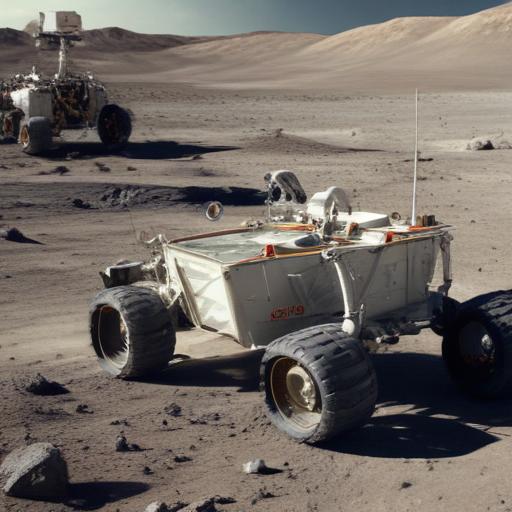NASA is set to initiate a groundbreaking phase in lunar exploration as part of its Artemis mission, which aims to return humans to the Moon. The space agency plans to deploy a trio of advanced instruments designed to enhance our understanding of the lunar environment. Two of these instruments will be integrated into a new Lunar Terrain Vehicle (LTV), a versatile rover that can be operated both remotely and with astronauts on board, while the third will function from orbit around the Moon.
The LTV represents a significant technological advancement as the first crew-operated vehicle to navigate the Moon since the Apollo missions. With the Artemis program’s ambition to establish a lasting human presence on the Moon to facilitate potential missions to Mars, the LTV will play a crucial role in exploring the lunar surface. It is designed to accommodate two astronauts and will also enhance NASA’s ability to gather scientific data over an extensive area.
The instruments aboard the LTV will focus on key tasks such as searching for water ice, mapping mineral distribution, and analyzing subsurface geological features. Among these, the Artemis Infrared Reflectance and Emission Spectrometer (AIRES) aims to identify and quantify lunar minerals and volatiles by capturing spectral data combined with visible imagery, specifically targeting the Moon’s south pole region.
The Lunar Microwave Active-Passive Spectrometer (L-MAPS) will delve beneath the Moon’s surface to detect ice locations and assess subsurface characteristics to a depth of over 40 meters (131 feet). Led by Matthew Siegler from the University of Hawaii at Manoa, the L-MAPS team seeks to unveil insights into the Moon’s geological history and the potential for resources.
Lastly, the Ultra-Compact Imaging Spectrometer for the Moon (UCIS-Moon) will operate in lunar orbit, mapping the geology and helping to identify regions for potential astronaut sample collection. This instrument will provide unprecedented detailed information about the Moon’s surface and its mineral composition.
Nicky Fox, associate administrator of NASA’s Science Mission Directorate, emphasizes the importance of the LTV in extending humanity’s reach on the lunar frontier. She notes that the combination of human and robotic exploration will yield significant scientific discoveries that not only enhance our comprehension of Earth’s neighbor but also ensure the safety of astronauts during their missions.
Through these innovative efforts, NASA is poised to not only reestablish a human presence on the Moon but also unlock new scientific knowledge and insights that may pave the way for future explorations, including those aimed at Mars.
This mission reaffirms humanity’s commitment to exploration and the potential for scientific breakthroughs that can arise from understanding our celestial neighbor.
